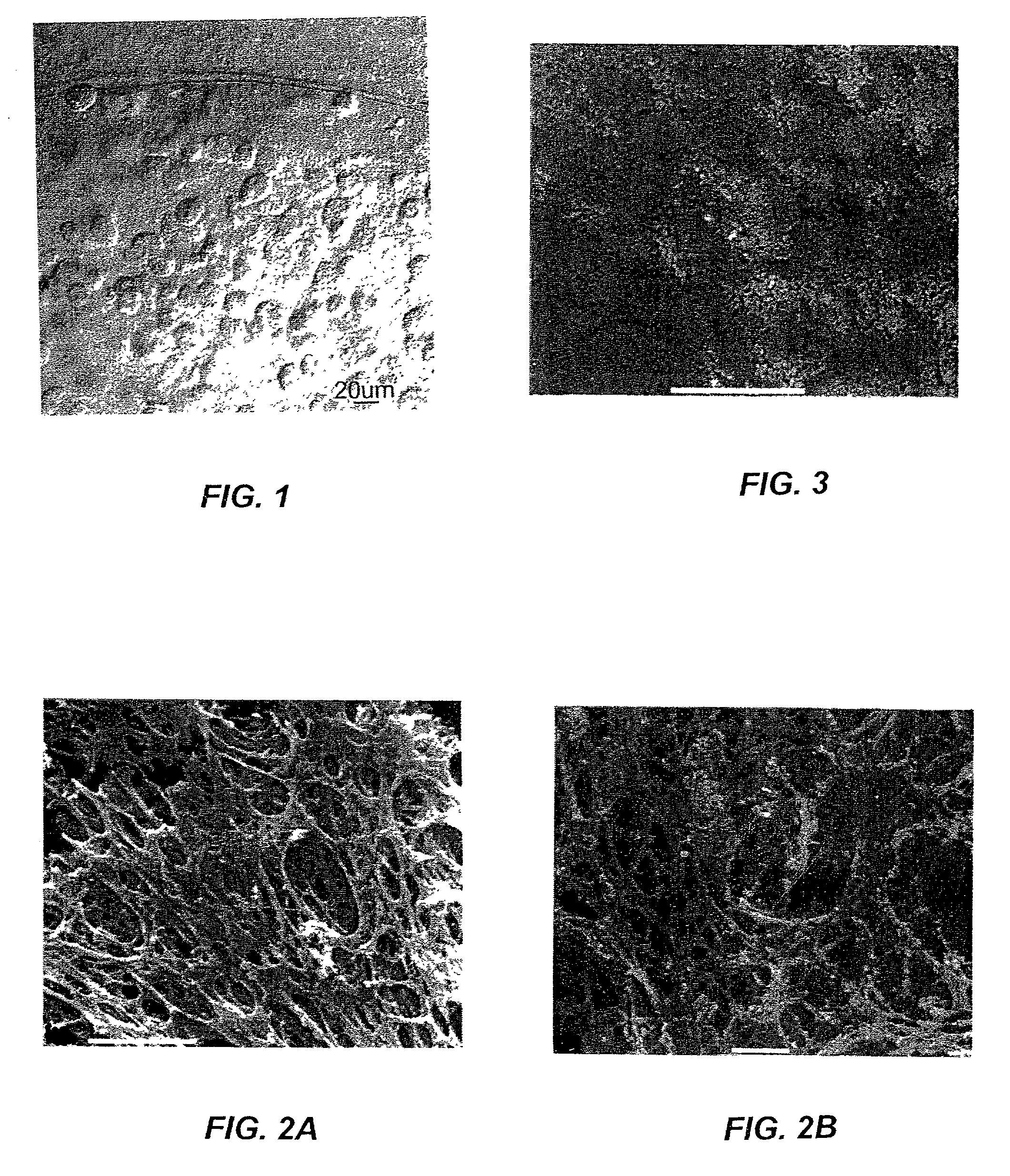Multi-layer cell encapsulation for tissue engineering
a multi-layer, cell technology, applied in cell encapsulation, immobilised enzymes, unknown materials, etc., can solve the problems of incongruity of the alginate-polylysine system, mechanical instability of the microcapsule, and affecting the function of the cell
- Summary
- Abstract
- Description
- Claims
- Application Information
AI Technical Summary
Problems solved by technology
Method used
Image
Examples
Embodiment Construction
[0064] The following example is illustrative of preferred aspects of the invention and should not be construed to limit the scope of the present invention. All reagents were purchased from Sigma-Aldrich unless otherwise indicated.
[0065] Ter-polymer Preparation
[0066] Ter-polymer of methacrylic acid (MAA), 2-hydroxyethyl methacrylate (HEMA), and methyl methacrylate (MMA) was synthesized by solution polymerization in 2-propanol using 2,2'-azobisisobutyronitrile (AIBN) as initiator. The monomers were distilled under nitrogen at reduced pressure. The polymerization was performed with an initiator concentration of 0.1 mol % of monomers under nitrogen with a magnetic stirrer at 78.degree. C. in an oil bath. The molar feed ratio of MAA, HEMA, and MMA was fixed at 25:25:50 or other ratios as desired and the ratio of total monomer to solvent at 1:6 (W / V). The reaction was allowed to proceed for overnight and quenched by cooling to room temperature. The polymer was precipitated by addition to ...
PUM
 Login to View More
Login to View More Abstract
Description
Claims
Application Information
 Login to View More
Login to View More - R&D
- Intellectual Property
- Life Sciences
- Materials
- Tech Scout
- Unparalleled Data Quality
- Higher Quality Content
- 60% Fewer Hallucinations
Browse by: Latest US Patents, China's latest patents, Technical Efficacy Thesaurus, Application Domain, Technology Topic, Popular Technical Reports.
© 2025 PatSnap. All rights reserved.Legal|Privacy policy|Modern Slavery Act Transparency Statement|Sitemap|About US| Contact US: help@patsnap.com



